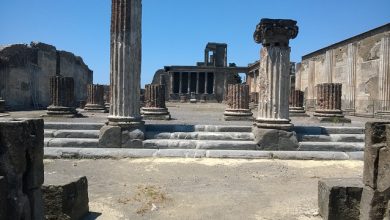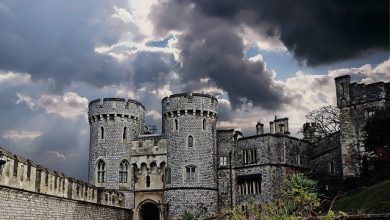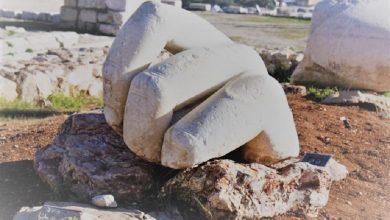Salt sculptures of the Dead Sea that make you freeze with delight

The Dead Sea is one of the most unique places on our planet. Evidence of the greatness of the Creator. The sea, which is a lake. It is shrouded in a romantic atmosphere of the unknown. It was there, on the shore, in Ein Gedi, according to the Bible, that King David was hiding from the pursuing Saul. Sodom and Gomorrah, burnt out by fire and sulphur, were located on the coast of this same reservoir. What other secrets and mysteries are kept in the saltiest sea in the world?
The Dead Sea is located in the Jordan Valley. It borders Jordan in the east and Israel in the west. In addition to being the saltiest sea globally, it is also the lowest elevation on land. The reservoir is located 423 meters below sea level. The depth of the Dead Sea is as much as 377 meters. It is the deepest salt lake in the world. Its salinity level is 33.7%, which is almost nine times saltier than the ocean. There are 340 grams of salt per 1 litre of water.
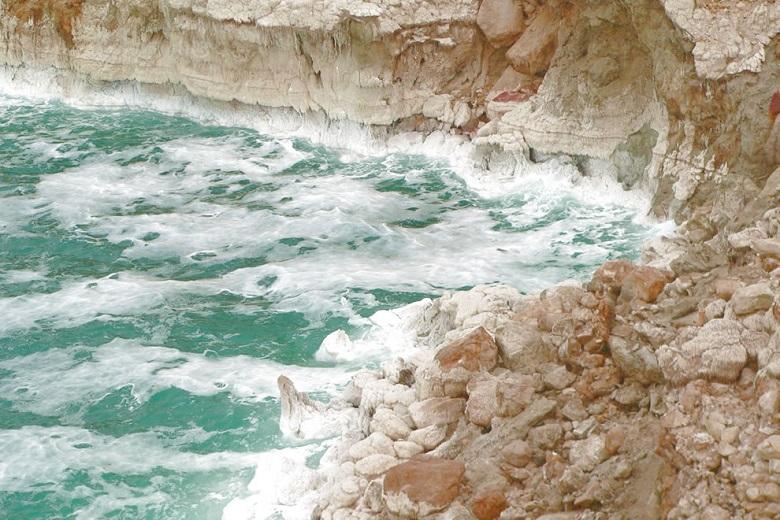
Extreme salt concentrations interfere with the prosperity of any aquatic life, and there are no plants or fish in the Dead Sea. Only bacteria and microbes are found there, and the water body is so dense that it is simply impossible to drown.
The waters of the Jordan River feed the waters of the Dead Sea. There is no outlet for these waters. Some seep into the surrounding soil, and the rest evaporates. Salts have been accumulating over the centuries and, over time, turned into true natural works of art.
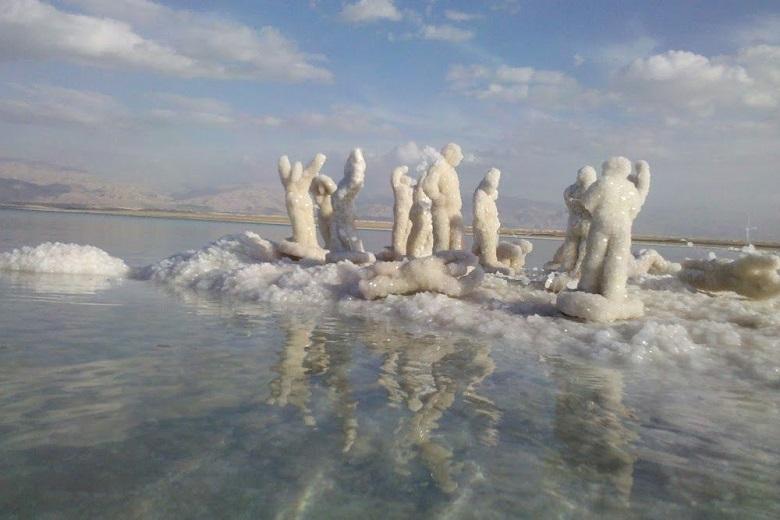
The water in this sea has medicinal properties and contains many different minerals. Magnesium, calcium, potassium, bromine, iodine, and many others have more than thirty-five of them. A curious chemical process contributes to crystal sculptures of extraordinary beauty in the shallow lagoons of the Dead Sea.
These formations shimmer in the sun with all colours of the spectrum, making the viewer freeze with delight. In the moonlight, it looks even more beautiful, acquiring a particular shade of mystery and romance. Billions of charged atoms in complex geometric formations are transformed into unique pieces of crystalline art.
Anyone lucky enough to get to the Dead Sea coast and see this breathtaking beauty will undoubtedly be incredibly impressed by the “salt mushrooms”. These are probably the most impressive sculptures. They stand on halite or rock salt stems near the shore. The hoods of these mushrooms are either round or elliptical, and the cap can be the size of a satellite dish.

From a distance, these formations look like giant mushrooms, as if growing out of water. When you get closer to them, you can see concentric rings, consisting of tiny flat crystals of halite, covered with specks. The stems of these mushrooms are stalagmites, which consist of pyramid crystals.
Some crystals look like a pyramid turned upside down, while others look like columns, the shape of which is covered with rectangular halite crystals. These are very fragile formations. Even the slightest breeze can destroy them. When these opaque, delicate clusters of crystals break, parts of it sink. Crystals are attached to the pebbles, grow together. So the stem is gradually formed. It takes a very long time, and the branch reaches the surface of the water. Nature sculpts its work further – a hat, and a hood appears.
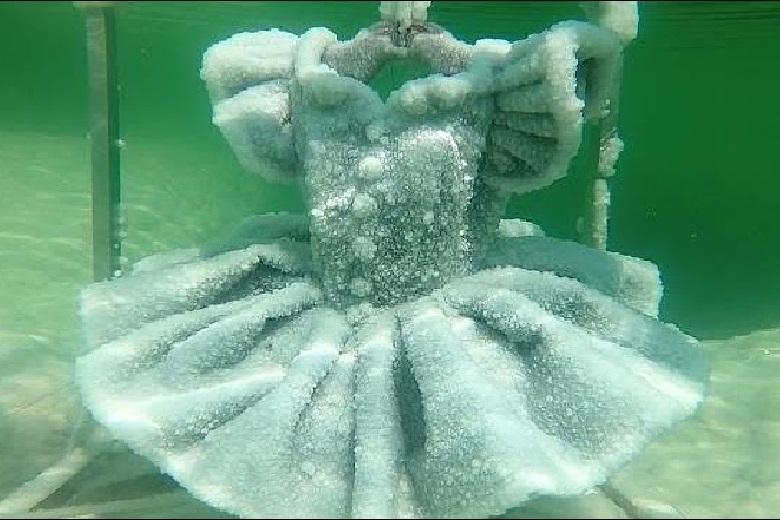
The Dead Sea is very diverse in the composition of ions and isotopes. That is why there are many sculptures, and they are so different in their shapes and colours. Light grey or brown crusts of gypsum (hydrated calcium sulfate) can be seen on coastal rocks, boat keels and ropes left in the water.
A stunning natural process transforms large, flat gypsum polygons into fairly complex calcite clusters (crystalline calcium carbonate). It has crystals in the form of tiny double needles. These crystals combine to form formations that resemble the flowers of white anemones.
It all looks just fabulous. The snow-white effect is given to these sculptures when a sharp rise in temperature, especially at the end of summer, is accompanied by massive precipitation. The slight movement of waves prolongs the deposition of crystals to the bottom, which gives the waters of the sea a striking effect of a kind of nebula.
Occasionally, air bubbles combine to form an ocean surf-like foam. At other times, tiny crystals adorn the surface of the water surface and sparkle like a placer of precious stones.
In recent years, the Dead Sea has been rapidly shallowing. This is because most of the freshwater from streams and rivers flowing into it is taken. People massively use this water for the needs of agriculture and industry. Such unreasonable management of this natural wealth makes the Dead Sea 1 meter shallower every year. Simply put, the Dead Sea is dying.
Unfortunately, such actions can lead to the fact that the water level itself will begin to change significantly, but all the ecological characteristics of the region. Over time, natural sculptures will become less and less. But this is not even the main thing. Already now, the rate at which water evaporates is much higher than the rate of its inflow. Ultimately, all this will lead to the fact that the Dead Sea becomes just a muddy puddle.
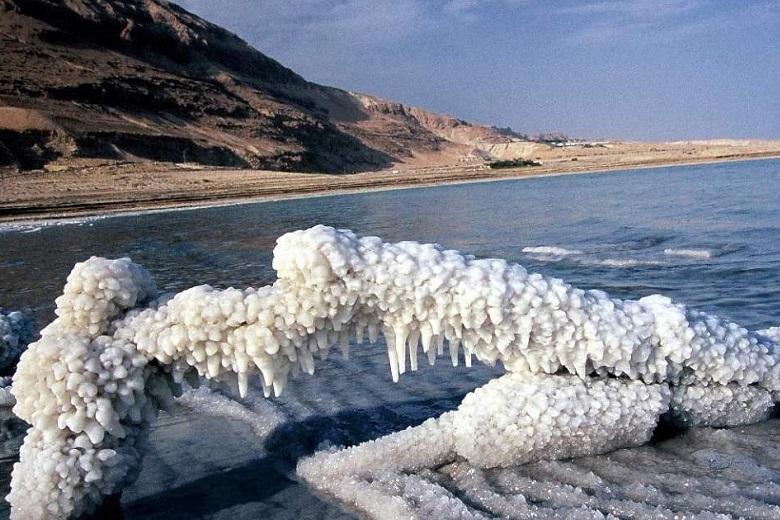
More than ten years ago, a project was developed and implemented to restore and preserve the Dead Sea. The project is to desalinate seawater from the Red Sea to provide fresh water for coastal Jordan. The salty residue of these waters is transported to the Dead Sea to make up for the deficiency.
Currently, this expensive project has stalled without being fully implemented. The cities surrounding the sea cannot come to a consensus on the necessary measures. Large industrial enterprises located in the region are entirely uninterested in saving the Dead Sea. This brings them a decrease in their profit.
For 100 years, numerous attempts to establish cooperation between riparian countries have failed due to a regional political conflict. This does not allow the parties to reach an agreement on the use of water resources.
Given the current political instability, countries are unlikely to take such measures to the detriment of their economies. Scientists predict that in 50 years, the Dead Sea will indeed become dead. But there will remain an almost 2-kilometre stratum of salt, which can be mined in an open way to the delight of politicians. Of course, this will pollute the entire region with salt and tourism, and the international health resort will fall victim to the billions of minerals.


